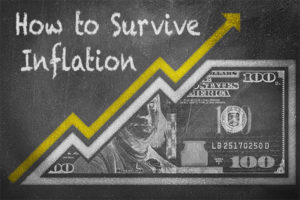The price of an education has risen once again, along with the amount of debt students take on by the time they reach graduation.
According to The Institute for College Access & Success (TICAS) Project on Student Debt, the average student loan debt reached its highest mark since the non-profit organization first began collecting information in 2005.
The study showed college loans held by the average student have risen to $26,500 for the class of 2011, a 5 percent increase from a year earlier. This difference, which equates to an increase of more than $1,000 in one year, has created an even larger struggle for young people in search of higher education.
The comprehensive report indicated approximately two-thirds of college graduates needed to take out college loans this past year and about one-fifth of the debt was secured by private student loans. These loans are known to have fewer repayment options and protections than federal loans.
Factors Affecting Debt Levels
According to the study, the average college loan amount differed greatly as well as the number of students who were forced to borrow in order to obtain a degree. Of all the colleges surveyed for the study, 64 colleges had 90 percent of students graduate with college debt.
Average debt also varied by geographical location. Students attending college in the Northeast and the Midwest had higher college loan debt versus those in the West and South. New Hampshire had the highest loan debt per student at about $32,450, in contrast to graduates in Utah who carried an average debt of $17,227. Only 45 percent of student in Utah graduated with debt, versus 75 percent of graduates in New Hampshire.
The Need to Borrow
Economists blame a number of issues for the continued need to borrow for education.
Tuition at nearly every American college has continued to grow over the past decade. While tuition and fees at private colleges and universities rose 3.9 percent for the 2012-13 academic year, according to a survey conducted by the National Association of Independent Colleges and Universities (NAICU), tuition increases averaged 5.7 percent per year for the 10 years preceding the 2009-10 academic year.
State budget cuts have also been blamed for the substantial increase in public school tuition over the years. For-profit colleges were not included in the NAICU study as so few of these institutions reported relevant debt data.
Unfortunately for students and their families, the increase in tuition during tough economic times has translated into a greater need to borrow. A vast number of students graduating with the class of 2011, for example, may have entered college on the cusp of the economic depression. A struggling economy combined with a larger tuition bill may have increased the need for loans as families realized they were not able to make tuition payments like they once planned.
Continued unemployment rates additionally played a significant role in whether families were able to contribute to college costs. According to the Bureau of Labor Statistics, the unemployment rate was 7.8 percent last month and has ranged between the 8 and 9 percent mark since 2010.
Post-Graduation Unemployment
Unfortunately for many college graduates, the increase in need for student loans has come at a time when unemployment rates for college graduates have also been extraordinarily high. According to the original TICAS report, an estimated 8.8 percent of graduates were unable to find employment last year. This rate may affect the ability of a vast number of graduates to repay college loans.
Some economists believe the college loan crisis is the latest financial bubble which will eventually burst when graduates are not able to get full-time employment and repay their loans. Large amounts of college loan debt cannot be paid off easily with the current high cost of living, especially if graduates are working minimum-wage jobs. Economists fear thousands of borrowers may end up defaulting on their student loans as a result.
The Changing Value of an Education
TICAS President Lauren Asher said in spite of rising tuition and low unemployment rates for recent college graduates, the college degree is still a valuable asset. “In these tough times, a college degree is still your best bet for getting a job and decent pay,” Asher said in a press release. For students who do need to borrow money for school, she said federal student loans are still the best option.
Sources:
- Ellis, B. (2012, October 4). Private college tuition rises 3.9%. CNNMoney. Retrieved from http://money.cnn.com/2012/10/04/pf/college/tuition-increase/index.html
- Lewin, T. (2012, October 18). Student-Loan Borrowers Average $26,500 in Debt. New York Times. Retrieved from http://www.nytimes.com/2012/10/18/education/report-says-average-student-loan-debt-is-up-to-26500.html
- United States Department of Labor. (n.d.). Labor Force Statistics from the Current Population Survey. Retrieved 2012, October 19 from http://data.bls.gov/timeseries/LNS14000000
- You will need Adobe Reader to view the PDF Download Adobe Reader


















